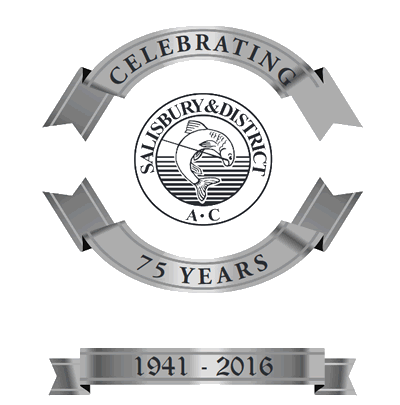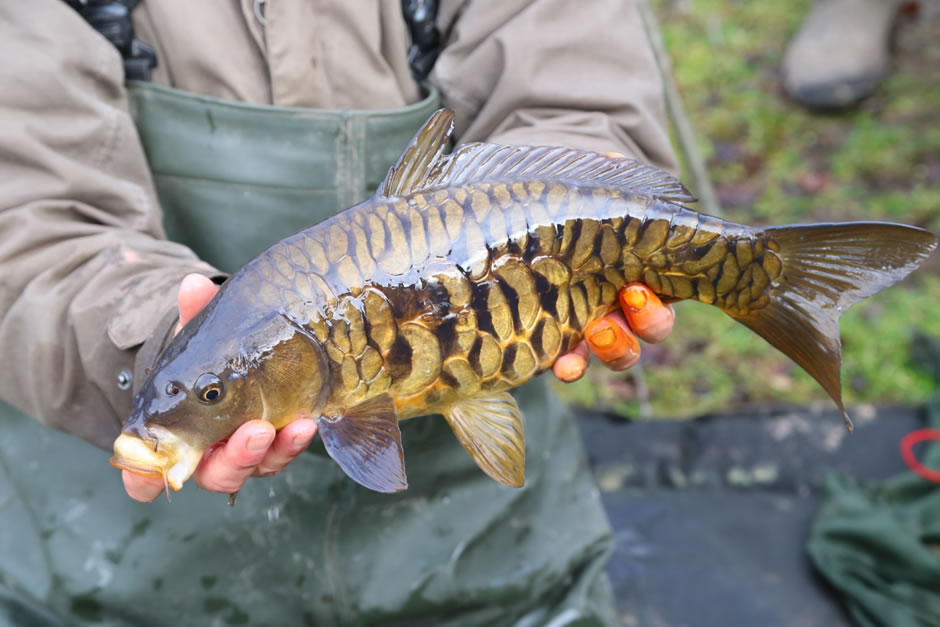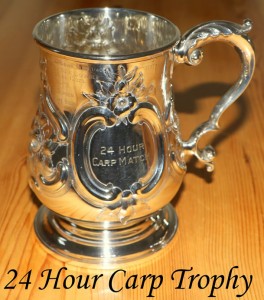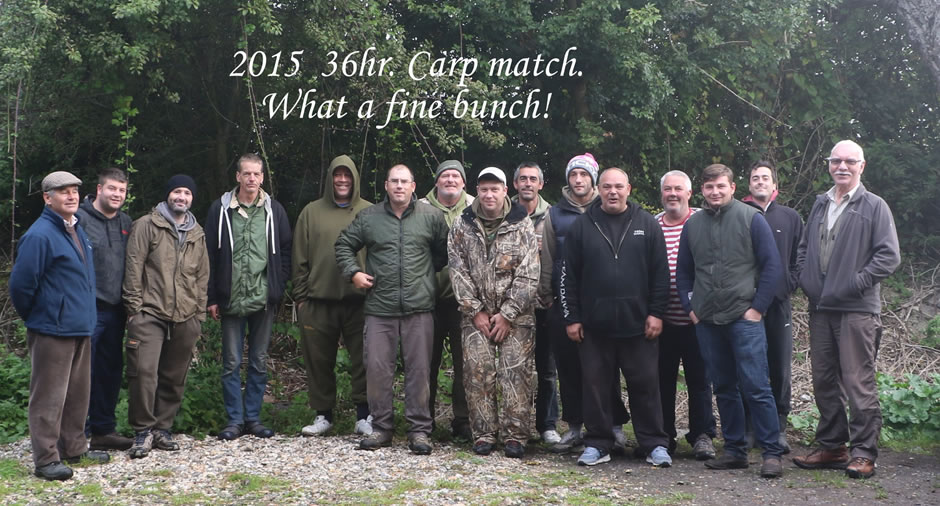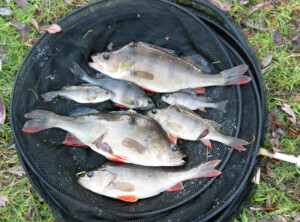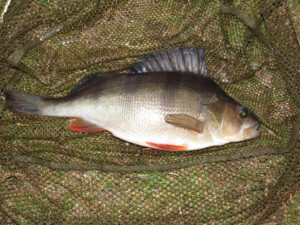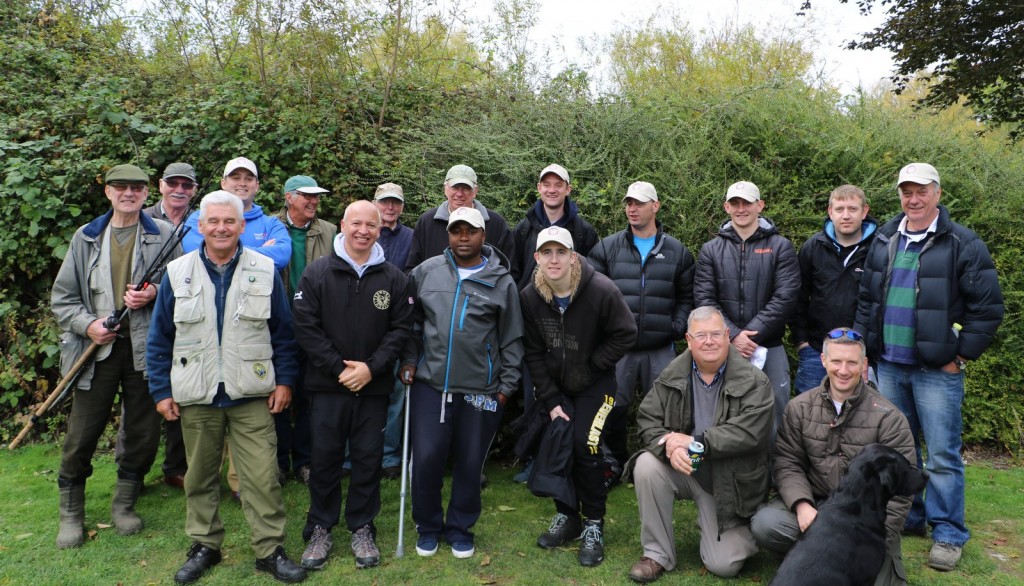Dear Members,
As I am writing these lines the game season has started and April is nearly gone. The rivers are running high with strong flows and the aquifers are full. The first week of the season looked very promising but the stormy weather in late March rendered most of our rivers unfishable. Still, it is very good news that there is plenty of water in the system and it
bodes well for good sport later in the season.
The grannom hatches started during the second week of April and there are some olives about. Fishing has been very much hit and miss, as it normally is the case in this early part of the season. Luckily, all of our river beats are open to members except the section below Ham Hatches at West Amesbury which still remains closed due to flooded banks. Please check the forum, or our main web site page under “Latest Fishing Availability” for the latest update.
We are hoping to have a decent mayfly season this year, if one is to judge by the number of mayfly nymphs that our fly monitors find in their three minute monthly “kick samples”. With plenty of water in the aquifers we should have good summer sport, but as ever we are at the mercy of the weather so it would be unwise to make early predictions. One thing is for sure though, the Avon is a very healthy river and has good fly-life when compared with many other rivers in the country. Based on an independent survey of 12 rivers in the UK, both chalk streams and spate, the Wiltshire Avon came second after the Derbyshire Wye in terms of water quality and fly-abundance. We are very fortunate to be fishing this river, but also have a huge responsibility to protect it the best we can. The pressures keep increasing with more housing developments in the valley and the inevitable build up of phosphates and nitrates.
Our battle continues on the environmental front with Wessex Water who came back with exactly the same proposal as last year to discharge water which is low in oxygen and high in nitrates on our carrier beat 22, thus having potentially a detrimental impact on our river ecosystem and naturally our fishing. We have refused to accept their plans and continue to fight the battle supported by the Trout and Salmon Conservation UK (S&TC UK).
On a related matter, in partnership with S&TC UK and Dr. Cyril Bennett MBE, we will be releasing shortly a new app with the full library of invertebrate photos and their identification keys. This is primarily aimed at other fishing clubs, syndicates and riparian owners who want to have a better understanding of the quality of their river. The first invertebrate identification courses will be run at the end of April at Leckford and the project will be supported nationally by the River Fly Partnership and S&TC UK.
Do not forget our Open Day on May 15th which will be held at Manningford Fishery, map 8 in your yearbook. It is the ideal day, particularly for new members, to experience the complete spectrum of fly-fishing with casting, entomology, fly-tying and river skills. A chance to socialize and share your enthusiasm with fellow minded anglers.
Book your place HERE.
Please make sure the Club is advised of any changed contact information especially if you change your email address, which for the majority of members is the primary point of contact for Club communication. There were in excess of 80 email bounces on the last newsletter email, correcting these errors takes up a considerable amount of time which could be better spent on other issues.
We wish you all Tight Lines for the new season.
Andreas Topintzis
General Manager
Water Maintenance Update
The winter of 2015 and spring of 2016 have been a busy time for the keepers, staff and volunteers. Amongst other work, some of the more notable improvements are:
- Fence renewed and moved back on beats 3, 5 and 7 at Durnford.
- New entrance, car park, drainage work and trees at Dandy’s Lake.
- Large trees removed at Petersfinger.
- Old stumps pulled on beats 2 and 13, hundreds of them!
- New signage at Durnford.
- Improvements to track at Langford.
- Re-opening of Ratfyn Lake after fish kills, tree work, new platforms.
- In-stream features and tree work at Stonehenge.
- Track, car park improvements at Stonehenge.
- Work with neighbouring developer at Petersfinger to install electric supply and eventually aerators.
- Car park dressed with stone at Nightingale, new platforms at Nightingale.
- Work at Bulbridge and Nadder Meadows to connect the two fisheries, remove fallen trees and further environmental work.
- Bridges, seats and wading steps at various fisheries.
This is just some of the work that is ongoing. Further plans for 2016/17 include:
- Bank repair on the Nadder at Churchfields.
- Installation of aerator and senior members’ car park at Ratfyn.
- Bank repair at West Amesbury.
- Bypass channel at Norton Bavant.
- Stapleford habitat work to achieve “Wild Wylye”.
- Consolidation of banks at Countess.
There has been concern expressed about the balance of input to our coarse and game waters. On the current membership, coarse variable between 450 and 600 members, game fixed at 1600. We believe the balance is about right.
As income streams, game membership raises approximately 80% of our total income and coarse membership raises the other 20%. Some other income comes from donations, day ticket sales, entomology, book sales, etc but it is comparatively small. Each year we plan improvements to coarse and game waters together, making no distinction in budget terms. Improvements are looked at in terms of the urgency and desirability of improving our fishing assets and of course value for money. The annual budgets and fees are set accordingly.
Major expenditure on coarse water improvements comes directly from the club but much of what is spent on game waters is raised separately and over and above the club’s other income from external agencies such as Environment Agency. So as examples, all the work at West Amesbury, the work so far at Stapleford, the Bulbridge scheme and the Sutton Veny scheme are all externally funded. The club derives income from these work streams which supports our machinery base, our staffing and other costs freeing time and assets for work on other waters. The club is run as one enterprise.
When staff costs, vehicles and machinery, office and admin costs, rents etc are all taken into account, it is clear there is interdependence in the coarse and game elements of the club. The whole club survives and prospers by treating its whole income stream as one. Finally, let us remember that many of our anglers make no distinction and are allrounders using all the waters.
John Stoddart
Vice Chair
April 2016
Game Fishing Update
We have started the 2016 season in good order and have reasonable expectations of a good year ahead. The winter weather has been kind, no damaging floods but steady rain that has filled the chalk aquifers almost to their top levels. I have described our winter maintenance and plans elsewhere. Members will find improvements on many of the waters.
Ratfyn Lake was closed last season after a disastrous fish kill. EA experts have looked at the lake and, after meetings with the owner, a lot of work has been done to re-open it for April 1st. Members will find the surroundings a bit bare at the start of the season as a lot of trees had to be removed to limit leaf litter. It will recover. At the moment the catch reports are as good as they have ever been.
The Bulbridge and Nadder Meadows fisheries are now being run as one from a single return book at South Street, Wilton. Parking is still available at Bulbridge Farm on Burcombe Lane. A pedestrian gate (kissing gate) is to be installed at South Street so that we do not have to climb the field gate. Access improvements are being made throughout the fishery and work will continue to improve the habitat. Last year’s work is showing good results with the first signs of new ranunculus growth spotted in the lower carrier. Again catch returns so far have been excellent.
The entomology teams are reporting good numbers of mayfly nymphs in the kick samples, indicating, we hope, a bumper year for mayfly. Grannom transplantation efforts from downstream continue. If the current spring diet of showers and warm sunny spells continues, we might expect another good grannom year in contrast to last when the cold wet spring limited the hatch.
Swans devastated some of our beats last year after low flows followed two seasons where weed was ripped from the river bed by floods. This year, the ranunculus growth seems to have started well. We keep our fingers crossed that the weed will survive and develop and the flows will be strong enough to make the swans work for their supper. Weed is vital to the invertebrates, the fish and the fishing.
We will fish the Norton Bavant beat until the end of June when we expect work to start on a new bypass channel similar to Bulbridge. This will curtail our use until 2017 when we will be continuing habitat improvement work and hope to extend the fishery upstream to the next bridge.
Please keep an eye on the club forum and website for latest updates and news. Some useful guidance on nymphing rules and expectations has just been posted there under “Manners and Ethics“.
John Stoddart
Vice Chair Game
April 2016
AN APPEAL – IN 2016, THE SALISBURY AND DISTRICT ANGLING CLUB WILL BE CELEBRATING ITS 75TH ANNIVERSARY
In 1941, the Club was formed by a few ‘chums’ in Salisbury and it was named ‘The Bourne Angling Club’ after the first water acquired.
So much (as you may appreciate) has happened since those early days in the Second World War.
The Club wishes to produce a book in this anniversary year to document, celebrate and preserve some of the history of the Club. Events have passed which have only been consigned to memory by our members. We need to salvage those memories before they are lost forever. I have been tasked with gathering together as much information (in any form we can) to go in the book.
To this end, we are appealing to all you good folk to scratch your heads, rummage through old diaries and photos and talk to any older members you know. Please forward your discoveries to me. This will contribute to an already substantial archive we are able to access from old Club Minutes, etc.
We wish the book to contain historical facts and hysterical facts! All of you have stories to tell about days out on our Club Waters so get writing and be one of our contributors to this 75th anniversary book.
Please send any information via E Mail to :- rickypolden@virginmedia.com or post or drop your gems into the Cart Shed. Any original material will be returned safely to you.
In anticipation, very many thanks.
Ricky Polden
Committee Member
Fishing 4 Schools
Fate, weaves intricate patterns.
Had it not been for Tewkesbury School, had it not been for a teacher (who didn’t fish) thinking that there was merit in introducing angling to young people with learning disabilities; had it not been for the head teacher knowing someone in the Countryside Alliance, Fishing 4 Schools might never have been born.
What an adventure it has been. Amazing. On a personal level, I have changed, irrefutably and irreversibly as a result. By degrees, what I have encountered has: enervated, angered, humbled, reduced me to tears, railed against social injustices and made me confront elements of society that I would never, in my wildest dreams, imagine I would work with. I have enjoyed and embraced every single moment. Young people are magnificent. Also they are worth our very best efforts be it fishing or with more formal education.
What I have discovered through the snakes and ladders of both, failures and undoubted successes, is that angling is, and can be, variously: a sharp, educational tool in our collective “work box”, a salve to heal the odd wound and a metaphoric door to places seldom encountered by many urban minded young people. I am truly, one of the luckiest people that I know.
Of course, the stark facts would point to a start for Fishing 4 Schools nearly a decade ago. Now? Well, the child has certainly grown up.
Fishing 4 Schools, since that one school, now delivers to some 40 schools at any one time throughout England and Wales and has broadened its scope, under the umbrella of the Countryside Alliance Foundation to touch young lives throughout all sectors of society and geographic areas. We know no barriers or limits.
But why? Why, is Angling so important to these young lives?
Of course, one argument that perennially rears its pretty strident head is: but surely you are only rewarding people who misbehave? Nothing could be further from the truth. As the director of the operation since its inception, all those years ago, I can categorically say that we have set out to embrace and educate young people through angling in the very widest social and inclusive manner possible. We do not deem to judge. Why should we? A fish doesn’t, so why should we?
What though, has become apparent is the educational benefits that we have been able to embrace and bring into these young people’s lives. And this fact, make no mistake, may prove crucial for their futures beyond school age and in the bigger society. Nowadays, with an ever pressing need to meet National Curriculum criteria, we have to adopt strategy that underpins and assists schools in a meaningful and actively supportive way; it is not just about going fishing.
Consider: making a rod. Just for a moment, think of all the areas that this activity covers. Geometry – tip deflection, weights, measures, pulleys, test curves. Mathematics – the calculations needed for ring diameters and spacing. Writing and documenting skills – the need to diarise and place down, in a coherent way, routes and paths to tasks which it turn, led to greater writing and literacy skills and working with IT in a more educational way (I know full well that most of the young people I meet have skills with computers that leave me in the complete and utter shade! But I want to drag them back from Games!). Geography, too! Once the rod is made, then the person will want to know where to use it and what species it was designed to be used for. The list goes on. But one fact rises above all others and that is working in a group and in an actively supportive way. That socialising skill is one of the great battlegrounds of today as we become an increasingly singular society and driven by elements, other than sheer dialogue and conversation and responses with peers as opposed screens, touch pads or keyboards.
That is just one programme. We have employed cookery, biology and a host of other subjects; but importantly made, and this is the crucial, killer point; given a reason to learn.
Now, this is all getting a little dry. But this is what we do and the sort of worlds we walk among. Looking back though, I can honestly say, that in all the school time and the young people that have wandered through our initiative, very, very few – in fact the number would be single figures amid the thousands – have not liked fishing. Give a person a rod and they want to fish: simple.
However, I have come to realise that competition reigns supreme within the young: take a group actually fishing and someone wants to win. We, as adults, might crave an “everyone is a winner” mentality: not so the thousands of young people that I meet. They want to catch (succeed) and win (beat others). I think that this is, completely healthy: proving, irrefutably, that we are not so far lost down a corridor of youth apathy as we might think.
And all this through Fishing!
When we first started this adventure we – TCAF – decided that we would teach fly fishing. Big mistake. OK there are many pluses – fly tying, bugs and so on, but the intricacies of casting was just so limiting, now we just take people fishing; along with the other elements that I mentioned.
To establish a route for young people, each course that we undertake is fully discussed with the school or the establishment (yes, we do work with the excluded and Pupil Referral Units) and is then specifically tailored to meet a school’s and students’ core needs.
We offer a variety of options, be it over a curricular term or year, a short course of four sessions – two sessions in the class room, two in the field and so on. More recently, we have started to implement, “open days” at various fisheries – Eyebrook have been magnificent in their help, so to Thames Water; also Sally Acloque; who has the delightful lake in Norfolk’s Lenwade and hosted our most recent “day”.
The F4S open days have been an innovative and at times heart rending way of introducing the sport in all its facets to young people; especially students suffering disability to see someone in a wheel chair enjoy fly tying, casting, coarse fishing, cooking, entomology, knot making … and having fun, is enthralling, engaging and humbling.
In short, the periods during the day are operated in twenty (or so) minute sessions and in the company of a Volunteer chaperone – often a local angler or indeed, someone just wanting to help, in order to keep things going, the questions flowing and times being kept to! The open days have been a massive success and have enabled us to work with over fifty young people at a time whilst allowing us to follow up with schools individually, thereafter, once the angling seed has been sown and enthusiasm captured.
So that is it: and the adventure just goes on and on. Last year, with the phenomenal help of the students from Bishop Wordsworth Grammar school in Salisbury, we made a short film that was financed and made by the illustrious London advertising company Kamarama about one fly: the Allwater (Imbed Vimio clip details). We are planning a new website with the assistance of some partial funding from the very generous worshipful Company of Fishmongers and that will firm a link to launching the project in the USA (working the Federation of Fly Fishers) and beyond, thus bringing young people and fishing that much closer.
With a new Chairman of the CA Foundation: Nick Bannister and a joining of Casting for Recovery and closer links to the Angling Trust the world is looking rosy and busy. But at the core … the epicenter is a young person and the magic that is fishing. Taking that message and yes: gift, into places like the docklands of Cardiff, darker areas of cities, Manchester’s Moss Side is a life changing and occasionally heart breaking part of the adventure.
That is why you might seem me doing very odd things for a sixty-odd year old … like running around the streets of London in April (just the twenty-odd miles …) or other mad cap adventures to raise funds. Every rasping breath and occasional agonising step, is worth it … the kids are worth it.
You see, what we offer is free to schools and agencies. It takes work, sweet, tears and toil but my goodness I would not have any other way.
What an adventure.
Charles Jardine
Vice President
Steeple Langford Lakes
Well, another season over and by all accounts a pretty good season. June 1st 2015 saw a cool and steady start but it wasn’t long before 30lb + carp were being caught. This continued throughout the season with many “thirties” and a new club record mirror carp of over 40lb! One young member banked over one hundred carp during the ten months, well done.
However, Langford is not just a good water for carp, it is a general coarse fishery. Large shoals of bream swim these waters and the match anglers found these several times during the season. There are good sized tench to be had and a large quantity of roach, rudd and skimmer bream together with perch of varying sizes. Pike also feature well. Lure fishing will mostly catch smaller fish (jacks) to 8/9lb and dead baits normally account for the larger fish, up to 20lb! Fly fishing for pike is also possible.
It would be good to see more “general” coarse anglers visiting the lakes. I am sure, in the right conditions, they would enjoy some excellent sport.
A few words, especially for our newer members.
We have been fishing the two lakes at Steeple Langford since the 1950s (possibly the 1940s?) and we purchased the fishing rights in the early 1960s. This includes a right of access to fish but we do not own the land or any other rights. Therefore all maintenance work has to be agreed with the land owner in advance. We do however, own the car park.
We have recently had a review of the lakes by an EA scientific officer and his report indicates that the fishery is in rude health with good habitat for fry survival. We will continue to monitor the water and make small improvements to maintain these refuges. Some will know that we stocked approximately fifty small carp (average 3 1/2lb) in January 2015 and these are showing very good growth rates, almost doubling in size in a year.
Please remember that the lakes are closed to all members during the closed season. This is to allow the banks to repair, (with the help of some re- seeding) in addition to essential repairs to banks and platforms. Cormorant deterring “hedgehogs” will be deployed during the closed season to assist with fry survival. A daily patrol by members of the managementteam will monitor for any potential problems.Two months is not a long time to wait and the “rested” lakes will reopen for business at 08:00 hrs. Wednesday 1st June !!
Good luck and “tight lines”.
Robin Sumsion
Committee Member
Attention All “Competitive” Carp Anglers!
As in previous years, there are two competitions this season for the keen carp anglers in our Club.
First up is the longstanding (pre 1960), 24 hour carp match. This is open to all club members and the trophy is awarded to the heaviest individual carp caught from any club water during the specified 24 hour period. This year’s match (2016) is scheduled for 12 noon Saturday 27th August until 12 noon Sunday 28th August.
All fish are to be weighed, witnessed and the weighing in certificate in your yearbook completed and sent to the Cart Shed within 7 days.
The second competition is our 36 hour match to be held from Friday 23rd September until Sunday 25th September 2016 at our Steeple Langford fishery on White Bird Lake only. The small lake
remains open to all club members.
This a pegged-down match and the draw will take place at 6pm on Friday, fishing to commence at 7pm and finish at 7am on Sunday.
Details and an application form will be posted at the fishery closer to the time. There will be a limit of 20 anglers to ensure fair coverage for all. As in previous years, there will be an entrance fee, 50% of which will be given to charity and the balance being given out as prizes.
Rob Sumsion
Committee Member
BT Lake
This was our first season under our new agreement to have the BT Lake as a club winter fishery. This agreement has been continued for the 2016-2017 season.This water, now called by the club Hayward’s Pond Fishery, is a spring-fed water which is used in the summertime by the farmer to help irrigate his nearby fields and so it can get very low causing the fish to move into its deeper pools. In the winter however, the levels are high and the water becomes ideal to fish with excellent local habitat. Prior to the start of the season, club volunteers and keepers carried out substantial tree work and removal of all the very dangerous platforms. A second work party cleared a dozen swims of the heavy weed growth to enable these swims to be fished at the start of the season. The club season on this water runs from 1st October to 31st March. Some very nice fish have been caught during the season including Perch, Rudd, Bream, Crucian Carp and Gudgeon.
This is a special little fishery being somewhat wild and overgrown, ideal for those that want a quiet session targeting good condition fish with natural baits.We will be carrying out further work on this water during the close season whist maintaining its essential good weed growth and wild nature.Many thanks to the club members and keepers for their work on this water; special mention must go to Mervyn Griffiths for his outstanding work clearing the platforms.
Having this water included in our portfolio certainly adds something different to the larger lakes we have, giving variety for our coarse fishing members.
Roger Hunt
Vice Chair Coarse
Fishing For Forces Days 2015 – Tedworth House
Once again, the club held a number of very successful fishing days for the injured guys and gals from the Tedworth House Recovery Centre. Our first trip was in May to Ratfyn Lake to fish for trout. What we experienced were monsoon conditions; some nice trout were caught however by the hardy few that ventured out to fish in the teeming rain. We had a great get-together eating our BBQ food and chatting whist all getting thoroughly soaked. To add to the excitement, the Tedworth House transport got stuck in the mud and many hours were spent by club members and a couple of REME guys trying to dig the vehicle out. Our keeper Steve was eventually able to come to the rescue and tow the vehicle out. A great day!
Our next trip was in July was to fish Walden’s Farm Lakes; here the owner and his team kindly offered the match lake for us to fish and provided an excellent BBQ lunch, under cover this time although thankfully the weather was fine. Fishing was quite challenging with a mixed bag of silver fish and a few carp caught. The weather was kind to us and the day was really enjoyed by all.
In August, we visited Petersfinger Lakes which are always popular with the guys and gals from Tedworth House. Plenty of fish were caught including some nice tench. Once again, a very successful day with a great BBQ provided by the club.
Our final trip was in October again to Petersfinger Lakes where our guests caught well; mostly silver fish but a few bigger specimens were taken. A few of our guests tried their hand at pike spinning with one or two Jacks being taken.
Each of these days was really enjoyed not only by our guests giving them a chance to relax and enjoy good sport, good company and to mix with the club mentors who between them have a great deal of experience both military and civilian to share with our guests (many of whom will be looking to make their way in civilian life after recovery).
My sincere thanks to all the club members that have given their time to help on these days. We will be holding these days again in the 2016 season. Please see the forum or your club handbook for dates.
Roger Hunt
Vice Chair Coarse
First Impressions
Six years ago, not long after we’d both retired, my wife and I sold up our Surrey home and relocated to Dorset. Goodbye to traffic, noise, and the unending hubbub of suburban life. Hello to peace and tranquillity, birdsong and distant views with the upper Stour a short stroll down the lane.
I enjoy this intimate part of the Stour despite the steep banks and sticky winter clay; the roach and chub feed most days and I rarely see another angler. However, in summer there is barely any flow in the impoundments between the ancient mills and when the winter floods come the river is frequently unfishable for days at a time.
I cast around, so to speak, for a fresh challenge; for good river fishing through the year and one that offered a mix of game and coarse fishing. The Salisbury club ticked all my boxes and travelling roughly eastwards from home I can reach most of the fisheries in less than an hour.
The club handbook duly arrived in good time for the new season and I spent many hours cross referencing each fishery with Google Earth and making plans for my first exploratory visits. I’ve been a member of many many clubs in the past, some for decades and others just as a trial and I have to say the SADAC handbook is second to none. Books by Searl, Wintle, Grozier, Lampard and Capt. Parker were studied and magazine articles from my large collection were similarly yielding snippets of information from the likes of Bill Gough, Dave Steuart and Jack Hilton. However, the best mine of information was to be the password granting entry to the forum. So much good stuff from game and coarse fishers alike – I can understand why older members wish to remain “in touch” as advancing years limit the ability to get on to the banks.
I guess some may think my childlike enthusiasm to be a step too far but in all honesty I am getting the same thrill from these new fisheries as I did when first I joined a “proper” club in the sixties. My one wish above all others was expressed in the forum’s “Please introduce yourself” in which I penned: ”I was a member in 1971/72 when subs were £6.00 and it was at the Hale Park fishery that I took what remains my largest river roach of 1-15. The Stour has rewarded me with a fish of 1-10 but big roach (on trotted flake of course) are top of my wish list. Please Salisbury make it happen!” Little did I know then that in my first season my wish would come true.
So what of the fishing for this new member?
For starters, the routes I take from Dorset to the fisheries really set me up for the day, rolling hills, chalk downs, wonderful villages and little in the way of traffic. Even the A303 to Amesbury can be enjoyable. My first trip in mid-June took me down the Wylye valley to Woodford where I gazed wistfully over the bridge and thinking maybe I should put my name down for the game fisheries but then again I do have all the other waters to explore first. I called in at Parsonage Farm and had an excellent day’s sport travelling light with a loaf of bread and a trotting rod. Maybe I should explain that I nearly always fish with bread in one form or another but sometimes use corn and worms. I tried most swims to the end of the meadow and was most impressed by the variety and quality of the surroundings – maintained but not manicured – a constant theme that I’ve found throughout the waters I’ve fished.
As an aside, in one of those all too rare encounters, I got chatting to the man who lives in the house at the far end of Mill Lane and he turned out to be the brother of a colleague of mine when I worked in Weybridge!
Charford I found to be an interesting fishery; there’s a lot of it for starters and it screams chub to me. I had a few on both the lead and float but I’ve yet to get to the upstream limit although I havefished there in a way through my sessions at the bottom of the White Horse water. Good chub also in that stretch and I’ve had a sizeable bream.
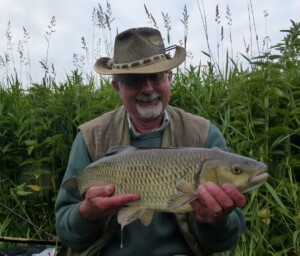 The Amesbury mixed fishery has surprised me and mistakenly I had assumed from a look over the bridge at Lord’s Walk that it would all be heavily wooded, shallow and not especially inspiring. How wrong could I be; I did not realise that the upstream end would be so different – deeper and weedier with any number of seductive swims. The grayling fishing has been superb (previously I had shelled out good money on the lower Itchen, the Frome and the Test) but Amesbury is superior in my opinion and as for the dace I’ve caught … a few of ten ounces plus and a real whopper of 14.5 ounces – a personal best.
The Amesbury mixed fishery has surprised me and mistakenly I had assumed from a look over the bridge at Lord’s Walk that it would all be heavily wooded, shallow and not especially inspiring. How wrong could I be; I did not realise that the upstream end would be so different – deeper and weedier with any number of seductive swims. The grayling fishing has been superb (previously I had shelled out good money on the lower Itchen, the Frome and the Test) but Amesbury is superior in my opinion and as for the dace I’ve caught … a few of ten ounces plus and a real whopper of 14.5 ounces – a personal best.
I think the town waters of the Nadder and the Avon have surprised me the most with lots of dace, trout, grayling and roach although I have found the meadows in the summer to be hard going and more often than not I’ve failed to get a bite. Maybe I should stick to stillwaters until the autumn frosts My best day has to be when I had my first ever two pound roach followed five minutes later by another, being two ounces larger at 2-03. SADAC has certainly made it happen for me – great fishing, friendly anglers, and a dedicated band of club officials and fisheries management team.
My first impressions – top marks on all counts and my grateful thanks to all who make it happen.
David Redwood
New Member
Wellow Lakes (Two independent lakes.)
Both are all year round fisheries and are very popular with the pleasure coarse angler. You are asked to sign in and sign out when you visit. A return book is placed at both lakes.
Nightingale Lake
Nightingale has 10 to 12 individual swims good access and parking within a dedicated car park. A small island provides cover for fish at the beginning of the lake. Carp and Tench form the species within the lake and you are likely to make contact with the odd eel.
Carp, well into double figures have regularly been caught with the occasional fish over 20 lbs. Tench will be around 2 to 4lbs. Carp can be caught on the fly during the summer months as well as from the surface using floating bred and traditional methods.
The lake offers a quiet tranquil environment and is undergoing sympathetic landscaping with attention being given to the appearance and improvement of the meadow surrounding the Lake.
The facility offered to our anglers by the new riparian owner demonstrates the commitment he has to the fishery.
Dandy’s Lake
The entrance to Dandy’s Lake, off Dandy’s Ford Lane has been changed.
Parking has been created nearer to the lake, off the lane just up from the tributary to the “Blackwater”. A SADAC sign identifies the access. The Lake is accessed through the new car park which will accommodate up to 8 cars giving safe access for our anglers and removing the necessity to park your vehicle in the road way. The lake has numerous swims cut out around the perimeter of the lake and also has a small island at the left hand side nearest the car park
Carp is the main species found at the lake together with Tench and roach. Eels are also caught during the summer months. The carp are up to 17 lbs+ with other species coming in at various weights.
We hope the new access will encourage our members to visit it more often as it gives an easier access for those of our members that may have had difficulty walking through uneven fields and occupied by horses.
Brian Phillips
Hon. Bailiff Co-ordinator
Download Newsletter HERE

